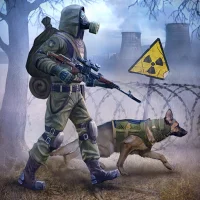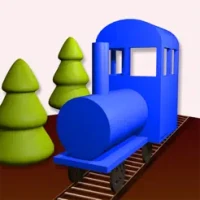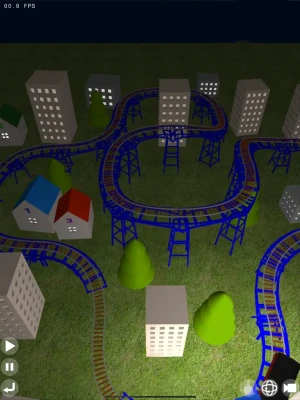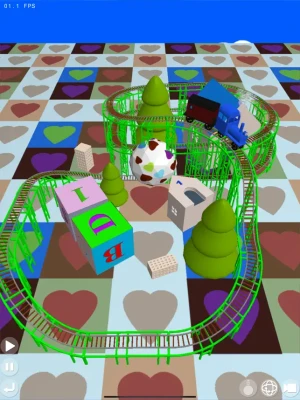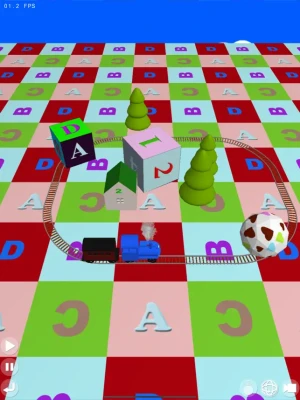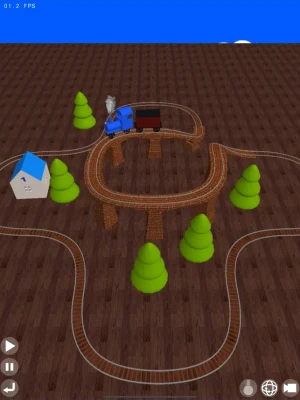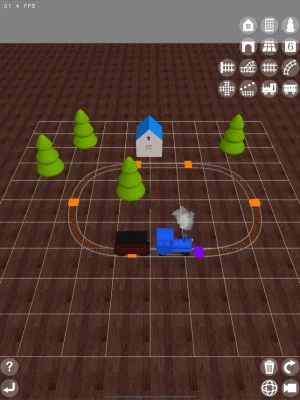
Latest Version
2.2.6
April 28, 2025
Toy train simulator
Games
iOS
30.2 MB
0
Free
Report a Problem
More About Toy Train 3D
Experience the Thrill of Train Simulation: Design Your Own Layout
For enthusiasts and hobbyists alike, train simulation offers an exhilarating way to immerse yourself in the world of railroads. Whether you’re a seasoned model train aficionado or a newcomer eager to explore, the ability to create your own unique layout is a thrilling aspect of this pastime. In this article, we will delve into the various elements that make train simulation an engaging experience and provide tips on how to design your own original layout.
Why Train Simulation is Captivating
Train simulation is more than just a hobby; it’s a passion that combines creativity, engineering, and storytelling. The allure lies in the ability to control every aspect of your train environment, from the tracks to the scenery. Here are a few reasons why train simulation captivates so many:
- Creativity: You have the freedom to design landscapes, choose train models, and create intricate layouts that reflect your vision.
- Technical Skills: Building a train layout enhances your understanding of engineering principles, electrical systems, and design.
- Community: Joining a community of train enthusiasts allows for sharing ideas, tips, and experiences, fostering friendships and collaboration.
Getting Started with Your Train Layout
Creating your own train layout can be a rewarding experience. Here’s how to get started:
1. Define Your Theme
Before you begin, consider what theme you want for your layout. Do you prefer a modern cityscape, a rural countryside, or perhaps a historical setting? Defining a theme will guide your design choices and help create a cohesive look.
2. Choose the Right Scale
Model trains come in various scales, such as HO, N, and O. The scale you choose will affect the size of your layout and the level of detail you can achieve. HO scale is popular for its balance between size and detail, while N scale is ideal for those with limited space.
3. Plan Your Layout
Sketching your layout on paper or using design software can help visualize your ideas. Consider the following elements:
- Track Design: Plan the track layout, including curves, switches, and elevation changes.
- Scenery: Think about where to place buildings, trees, and other landscape features.
- Operational Features: Decide if you want to include features like stations, yards, or industries for your trains to interact with.
Building Your Layout
Once you have a plan, it’s time to bring your vision to life. Here are some essential steps to follow:
1. Gather Materials
Collect all necessary materials, including tracks, trains, scenery items, and tools. Quality materials will enhance the realism and durability of your layout.
2. Construct the Base
Build a sturdy base for your layout. This could be a tabletop or a dedicated train board. Ensure it’s level and can support the weight of your trains and scenery.
3. Lay the Track
Begin laying the track according to your design. Use track pins or adhesive to secure the tracks in place. Test the layout with your trains to ensure smooth operation.
4. Add Scenery
Once the track is in place, it’s time to add scenery. Use a combination of commercial products and DIY techniques to create realistic landscapes. Consider adding hills, rivers, and buildings to enhance the visual appeal.
Enhancing Your Train Experience
To take your train simulation to the next level, consider the following enhancements:
1. Digital Control Systems
Investing in a digital command control (DCC) system allows for more precise control over your trains. You can operate multiple trains independently, control lighting, and even add sound effects for a more immersive experience.
2. Lighting and Effects
Incorporate lighting into your layout to simulate day and night cycles. Use LED lights for buildings, streetlights, and even your trains to create a vibrant atmosphere.
3. Interactive Features
Consider adding interactive elements such as working signals, automated switches, and even scenery that changes with the seasons. These features can make your layout more dynamic and engaging.
Join the Community
One of the best aspects of train simulation is the community that surrounds it. Join online forums, attend local train shows, and participate in clubs to share your experiences and learn from others. Engaging with fellow enthusiasts can provide inspiration and new ideas for your layout.
Conclusion
Creating your own train layout is a fulfilling journey that combines creativity, technical skills, and community engagement. By defining your theme, planning your design, and building with care, you can craft a unique train simulation experience that reflects your vision. Embrace the thrill of train simulation and let your imagination run wild on the tracks!
Rate the App
User Reviews
Popular Apps










Editor's Choice



